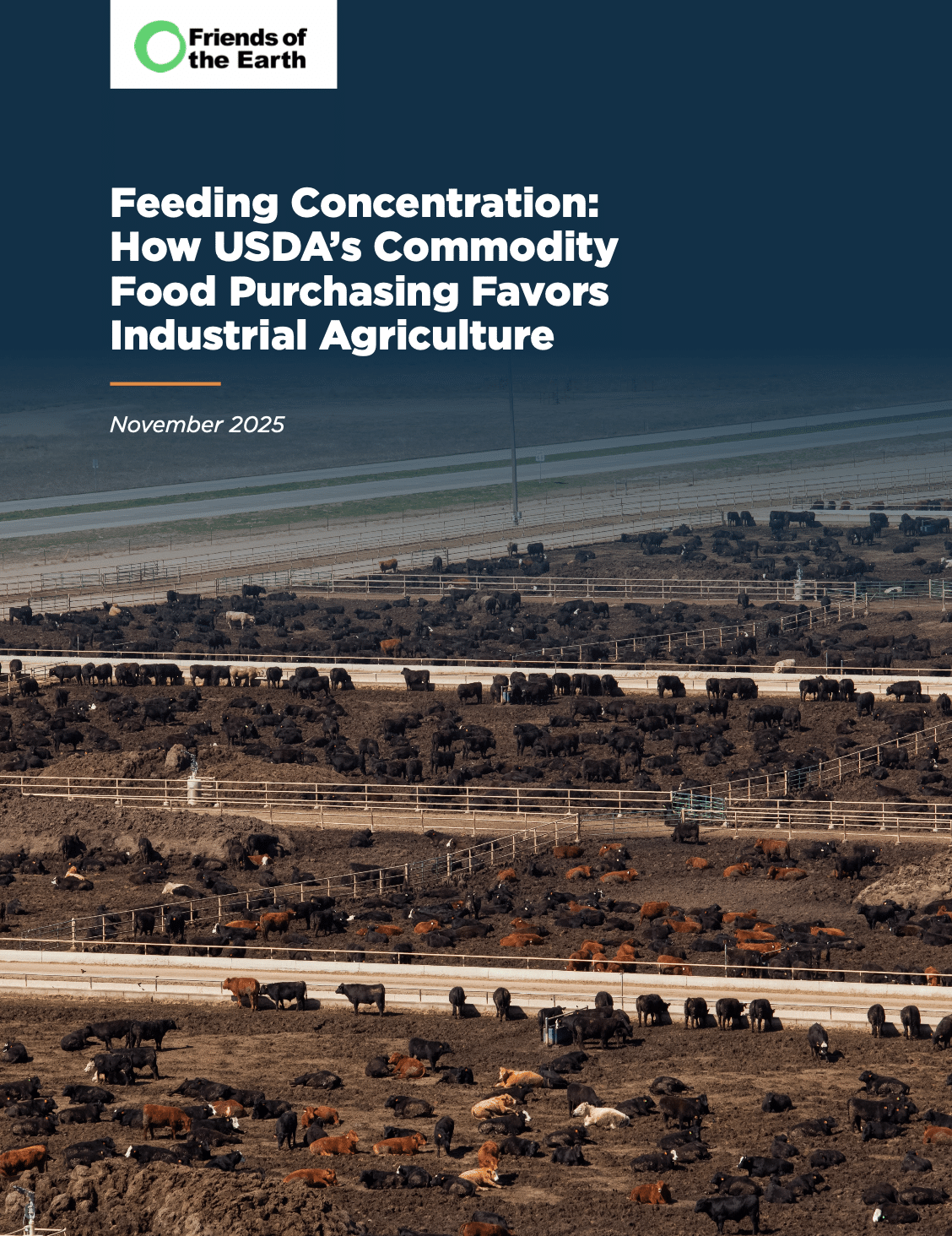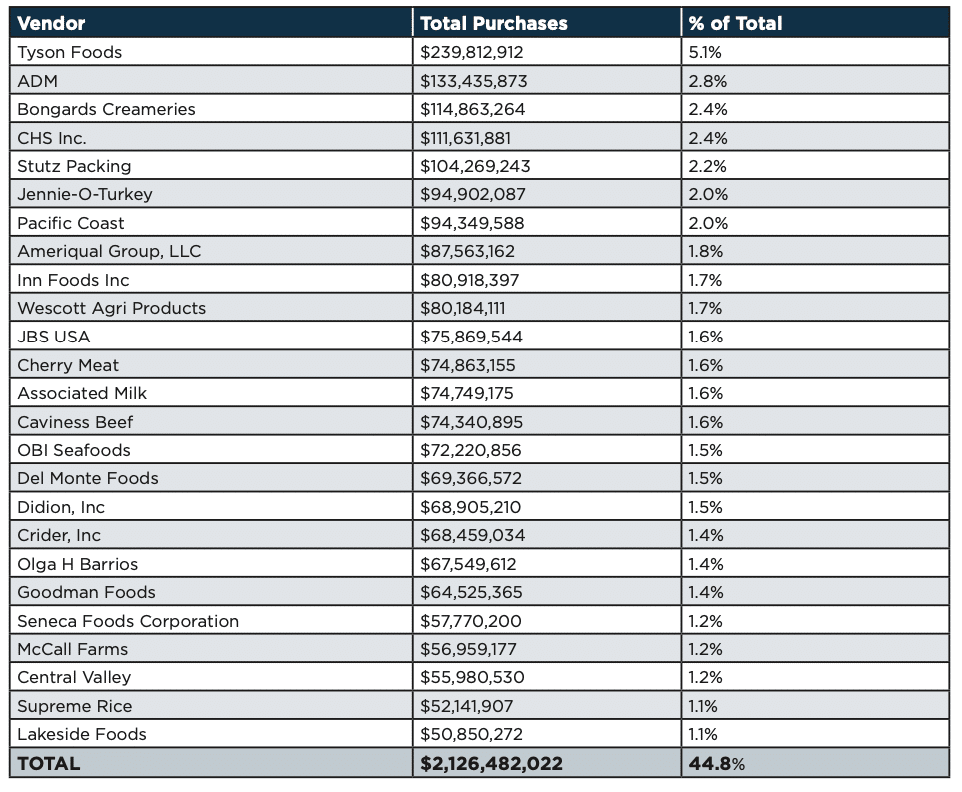Feeding Concentration: How USDA’s Commodity Food Purchasing Favors Industrial Agriculture

Read the report
Read the press release
Read the 2023 analysis of federal food purchasing data
In Fiscal Year 2024, the U.S. Department of Agriculture’s (USDA) purchased $4.8 billion in food for its commodity procurement programs that support school meals, senior meals, food banks, and Indian reservations. Nearly half of all USDA food spending went to just 25 companies, with poultry giant Tyson Foods receiving the largest share despite a history of workplace safety, labor, environmental, and food safety concerns.
The findings emphasize that USDA’s purchasing practices continue to concentrate power among a small number of multinational corporations, limiting opportunities for independent producers and undermining goals of fair competition, sustainability, and public health. Key findings include:
- In FY 2024, USDA’s Agricultural Marketing Service (AMS) spent $4.77 billion on direct food purchases, with nearly half (46%) directed toward animal products.
- USDA’s top 25 vendors received 45% of all USDA food spending.
Top 25 suppliers to USDA AMS in FY 2024 by contract value

- Tyson Foods was the top supplier, receiving $238 million (5% of total spending and 43% of all poultry contracts).
- Market concentration was evident across nearly every category: in 10 of 13 food categories, just five companies controlled the majority of spending — including 83% of pork, 76% of cheese, and 72% of poultry contracts.
Top suppliers to USDA AMS by select food category

To build a more fair, sustainable, and resilient food system, we call on USDA to:
- Diversify vendors by creating opportunities for small, mid-sized, and independent producers.
- Prioritize health and sustainability goals, including organic and pasture-raised products raised without hormones or antibiotics.
- Hold corporations accountable by disqualifying vendors with repeated labor, workplace safety, or environmental violations.
- Improve transparency with detailed annual reporting on suppliers, production practices, and procurement outcomes.
Ways to Support Our Work

Read Latest News
Stay informed and inspired. Read our latest press releases to see how we’re making a difference for the planet.

See Our Impact
See the real wins your support made possible. Read about the campaign wins we’ve fought for and won together.

Donate Today
Help power change. It takes support from environmental champions like you to build a more healthy and just world.